
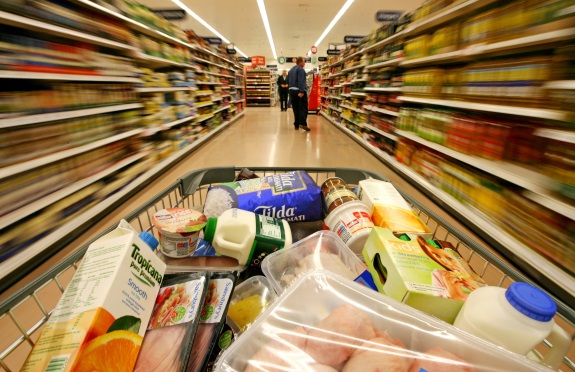
Over 70% of FMCG categories are predetermined before shoppers enter the store. Most of the items bought in supermarkets are already determined by routine before the shopper walks down the aisle. Yet there's a massive opportunity for 28% of the product purchases where impulse purchasing still reigns. The question is, what categories do shoppers engage with instore?
The Nielsen Category Shopping Fundamentals survey shows more people go to the supermarket to buy milk (57%) than any other item. Now you know why Coles launched its massive $1 a litre own brand milk campaign to grab share from Woolworths. Yet milk is one of the least considered decisions shoppers make at point of sale. Over 70% of shoppers aren't engaged by the category in the store.
It's a similar story for pet food and toilet paper. If you're a marketer of these low engagement instore categories you will get a better marketing ROI from a brand advertising campaign or an incentive before people go shopping.
Low engagement products don't benefit well from instore merchandising
Prospects who are less interested in your product instore are best marketed to out of store. From flyers to shopper dockets, catalogues to mobile promotions driving people to the store you will have better impact than attempting to get their attention while on autopilot in your category aisle. Packaging and instore merchadising is also less likely to switch customers between brands than other categories where people are actually paying attention.
However over half the shoppers surveyed are engaged by the process of shopping, just not with every category. So it follows knowing which category a product falls into helps marketers decide where to best invest in marketing.
The high engagement FMCG categories are frozen snacks and desserts
Shoppers are more engaged by more indulgent purchases like frozen desserts (64%) and infrequent purchases like toothbrushes (64%). Here is a snapshot of what shoppers are looking at with their brains switched off versus on:
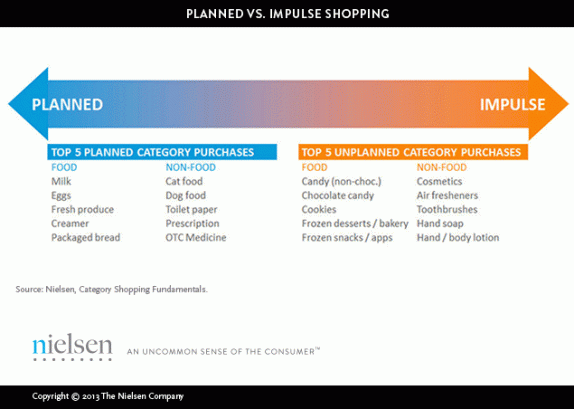
Categories with high engagement are better served by product innovation, instore merchandising and promotions and eye catching packaging.
Our marketing for Pacific West frozen seafood and snacks was centred on creating news and a fresh take on seafood. More adventurous choices has proven to be a more appealing strategy to the predictable product and positioning of Birdseye and I&J. Seven years of year on year growth for Pacific West shows what a difference it makes when you leverage an engaged instore audience.
Read MorePugs & Kisses & Christmas Wishes

(Click to Play)
A sincere thanks to our friends and colleagues for sharing our journey in 2013, UNO’s 13th year growing challenger brands.
We wish you and your family (and all creatures great and small) all the best for 2014.
Once again rather than send cards, we are supporting four koalas through the caring efforts of The Koala Foundation.
Best wishes from the UNO family.
Read MoreAIDS ads that changed our lives: If it's not on, it's not on

Australia faced a big problem in the 80s: AIDS was killing us
In the late 1980s AIDS was spreading unchecked in Australia amongst sexually active adults with multiple partners, homosexual males and intravenous drug users. Most people had no idea how you could catch it and there was no known cure. The only certainty was if you found you had AIDS, it was a death sentence.

The first government advertising campaign to raise awareness of the issue had failed to address the spread of AIDS. While “The Grim Reaper” ads certainly gained attention, the messages had not connected with those at risk and had not changed unsafe sex practices.
Indeed the Grim Reaper had simply scared the general public, especially kids and older people, without offering a compelling safe sex message. In charge of the government's AIDS awareness task force, Ita Buttrose had acknowledged the mistake the Grim Reaper fear campaign had been. The agency responsible that she'd appointed was fired and we were asked to implement our campaign they'd originally passed over for the Reaper.
The creative solution: "next time you go to bed with someone, ask yourself..."
"...how many people are you really going to bed with?"
You can't scare people into doing what's good for them. In fact, it's human nature to reject being told what to do. The art of persuasion often begins with starting a conversation that acknowledges the audience's point of view. And builds from there with an undeniable logic.
This commercial for the first time educated the community it wasn't "other people" who got AIDS, it was potentially anyone who went to bed with someone for unprotected sex.
Shot by Ray Lawrence (who went on to direct Bliss, Lantana and Jindabyne) my AIDS "beds" ad was made before the era of computer generated images. We put 800 real people into 400 real beds in the largest space we could hire in Sydney, the old tobacco bond store in Moore Park. The campaign worked in achieving the brief of raising awareness and driving behaviour change amongst those most at risk. The managers at Ansell would report an uplift in condom sales with every burst of our ads.
It's not often in this business you get the opportunity to really make a difference for society. It's usually baked beans and banking products.
Over three years as lead creative communicator I helped develop a series of undeniable messages that were created for specific audiences. From mass market messages on TV and radio, brochures for distribution in health clinics, English as a second language ads in ethnic press to bus sides and gay street press, posters on beats and stickers on public toilet doors.
The “Beds” ad which asked “next time you go to bed with someone, ask yourself how many are you really having sex with?” gave a graphic explanation of the chain of infection. The “Tell him if it’s not on, it’s not on” ads empowered people to demand their partners wear a condom. On the back of dunny doors in pubs across the country you couldn't ignore the big sticker of a condom clad erect penis with the words: "cover yourself against AIDS"
The outcome: Australia led the world in stopping the spread of AIDS
The integrated advertising campaign successfully raised awareness of AIDS amongst those segments of society most at risk of infection. The messages also reassured those not at risk and transformed the public view from one of “victims of AIDS” to an empowering safe sex message.
The creative campaign was instrumental in educating the public and changing sexual behaviour to succesfully reduce the transmission of the AIDS virus. The leader of Australia's health sector tasked with stemming the epidemic acknowledged the strength of the campaign:
“The message in this war against AIDS is a tough one – we know it will be controversial but we are certain it is the right approach, and it is backed by the World Health Organisation.”
Professor Ron Penny, National AIDS Council, 1988
This AIDS campaign is still recognised around the world as the most effective of it’s kind
Read MoreObstacles to innovation: A jeweller’s tale
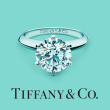

Have you read the retail sector is finally looking up? Unfortunately not for everyone.
A friend of mine is one of Australia’s leading luxury jewellers. This year his turnover is down 20% and the word in the trade is over two dozen high-end jewellers around Sydney are on the brink of closure. That’s a lot in such a niche category. What has served them well for decades has seemingly evaporated overnight.
Where have the sales gone? A few years ago no-one had heard of Pandora as a brand of jewellery. Australia is now Pandora's fouth biggest market in the world. Or have you heard of The Iconic as a place to shop for fashion? Last week The Iconic turned over $1,000,000 of online sales in one day.
The simple answer for retail is to go online, right?
My jeweller’s quandary is he opened an online store with a similar offer to his shop and failed to gain any incremental growth.
Global changes demand an innovative response
It’s not just small high-end jewellers suffering from change. The global super premium brands are suffering the curse of ubiquity, Louis Vuitton sales are plummeting despite the increase in purchases of luxury goods by the emerging Chinese millionaire class.
We are increasingly seeing fashion conscious style setters seeking designs from unknown startups, boutique designers that they can tell friends they’ve discovered. Being in the know has more credibility with peers than wearing what any person with a Platinum card can buy in any Gucci store, from Guangzou to Fifth Avenue, Sydney to Roppongi.
Big brands have difficulty innovating as they have an aversion to cannibalising their existing business. It becomes harder the bigger and more established you are, which fortunately gives Australian challenger brands an advantage. The barriers to innovation have been identified in a Australia wide research by the Australian Institute of Management:
What’s stopping Australian businesses innovating

My friend said he had come across an offshore maker of silver jewellery, gold plated with semi-precious stones that look amazing but only retail for $300 to $500. His fear is if he stocked them no-one would continue to pay $3,000 to $5,000 for his similar looking existing product.
My suggestion to my jeweller friend is to take advantage of his ability to be more nimble than a Tiffany. He isn't facing the number one barrier to innovation, a lengthy development time and there is a way he can try something new with minimal risk. If he quickly sets up a small online store under a different brand, he then has no reputation to lose and can test the appetite for this new product.
The ability to test the mix of product and price is easily done with an online store. I’ve written in the past about how we can learn from fashion retailers that are innovating for pricing advantage.
The study shows the upside to trying new ways by becoming an innovator in your category is huge.
Innovation leaders Vs laggers: business performance ratings.
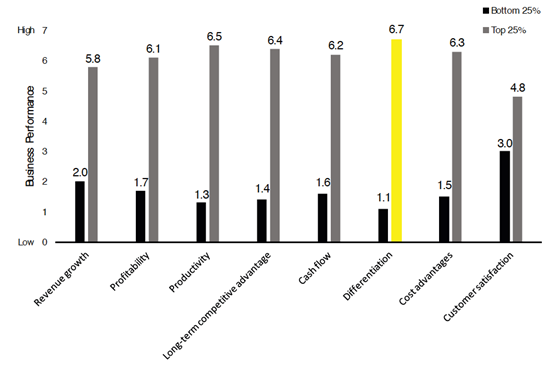
Innovation leaders are two to three times more successful than innovation laggers in terms of growth, profitability, productivity and cash flow. Risk obviously has greater rewards than business as usual. One UNO case study proves the point, Butterfly Silver was the first Australian Jeweller to apply a fashion forward procurement model to become a successful challenger brand.
Source: University of Melbourne and the Australian Institute of Management. 2013
Read MoreSales conversion rates: the facts

Sales call stats – how does your team rate?
48% of sales people NEVER follow up with a prospect.
25% of sales people make a second contact and stop.
12% of sales people only make three contacts and stop.
Only 10% of sales people make more than three contacts with a prospect
So if your sales people are typical of all sales forces, what are the consequences of only 10% of them calling on a prospect more than three times?
Conversion rates increase with sales call rates
2% of sales are made on the first contact.
3% of sales are made on the second contact.
5% of sales are made on the third contact.
10% of sales are made on the fourth contact.
80% of sales are made on the fifth to twelfth contact
Sure, it costs more for your people to call more than 3 times, but consider your return on investment when you factor in the typical conversion rates. Three calls and under only converts 10% of sales!
If your sales people are not following up, the stats indicate there is little to be gained by simply adding new names for them to visit. It also shows the value of building brand awareness before the sales person calls.
Source: Richter10. Thanks to Rick Allen for sharing
Why are most ads so bad nowadays?

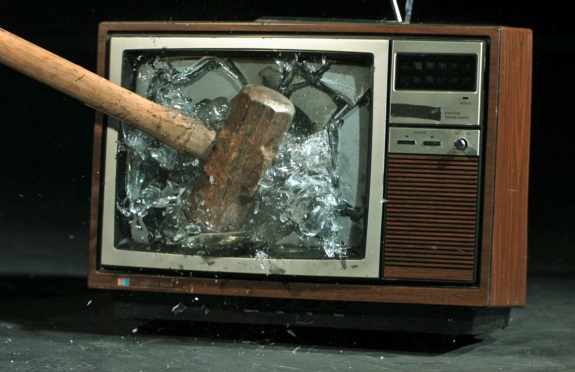
Bartle Bogle Hegarty was the London ad agency every ambitious Australian creative wanted to work at in the 80s. They made a series of great ads for Levis including “laundrette”, came up with "Vorsprung durch Technik" for Audi, "The Lynx Effect" for Unilever and "Keep Walking" for Johnnie Walker whiskey.
BBH creative founder “Sir” John Heggarty will speak at a global advertiser conference in Sydney in March. He has already given an idea of what advice he has to for Australia's advertisers.
What is the state of advertising creativity today?
“It’s one of the best times ever to be in advertising but why is it the work is poor,” he told AdNews from his organic and biodynamic vineyard in France. “I don’t know of any other industry in the world that would say the way to succeed is to make a worse product. And we seem to be in that situation in advertising."
CEOs in Australia say they want creativity
More than anything else, a recent Australia wide survey of CEOs shows they want their marketing agencies to be creative. Yet one look around shows how poor ads are today.
The CEO of a financial services group asked me recently what killed the Australian ad industry? "The Internet?" he asked. "Globalisation" I answered.
The fact is, in Australia the biggest brands mostly run ads from somewhere else. They don’t care if their ads don’t work very well here, in the global scheme of things one year’s revenue in Australia can be surpassed in one long-weekend in Florida.
So I wasn’t surprised to see Sir John identify the cause of mediocre advertising. “You can talk about technology being the reason but for me the biggest issue is the globalisation of our industry. We don’t seem to be able to create work globally that has impact. I think marketers today are losing contact with people despite the fact they have many more ways of communicating with them.”
Meanwhile home grown ad standards are going down, down
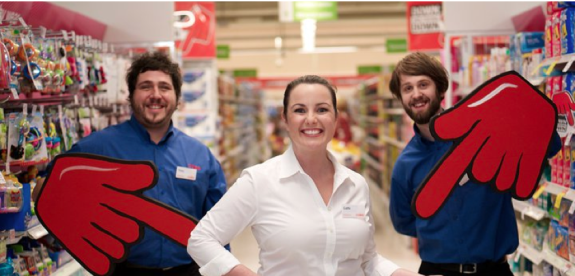
We are increasingly bomdarded with ads produced in-house by Australia's retailers, further driving standards down, down. Over 30 years creating ads has taught me great creativity sells. Especially when developed by local writers and art directors who are in touch with the essence of what makes Australians tick. I believe clients are best served by ads that tap into human insights, no matter how small. When told with humour or compelling gravitas a human truth will cut through where so called big ideas with big budgets and big name stars fail to connect with real customers.
Are you more inclined to buy from someone you like? I know I respond better to brands that have an endearing conversation with me, rather than a list of claims shouted at me, even when put to a jingle. The answer to appealing to customers doesn't lie in more data.
Sir John also warned about the dangers of data and analytics –
“Clients are desperate for salesmanship to be a science. They would love it to be. They would love to be able to say this equals that and this will be the return on investment so let’s do it. But they can’t. In the end it’s a judgment call you still have to make.”
Lets all hope more advertisers re-embrace the power of creative story telling, it makes better viewing.
Read MoreCustomer loyalty in Australia comes at a different price to O.S.

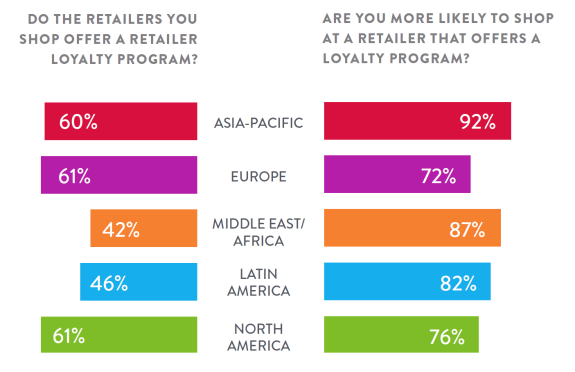
Our region ranks 1st in responsiveness to loyalty programs
We now have proof customers in the Asia-Pacific are the most willing in the world to reward businesses with loyalty. Whether you are in a service or product category, the good news for Australian business managers is your customers' loyalty doesn’t have to come at the price of discounting.
Don’t think global when marketing local
You can out-maneuver big brands that continue applying globally what works in their home market. Consider implementing strategies that Australian customers will reward with loyalty.
The US is introspective, remember it's the country that has a World Series with only US teams. Most US companies don’t have our local market's needs on their radar. Meanwhile, Europe’s big brands are struggling at home with a deflationary market. These parochial management mindsets offer Australian brands an unique opportunity. It's the perfect time to think and act local where big global players have a tendency to universally apply one strategy.
A global survey now shows us just how different Australian consumers are compared to the home town customers of global brands.
The Neilsen Global Report of Loyalty shows our customers are different
Unlike Europe and the US where 82% customers want discounts and free products as a reward, in our region we are less motivated (70%) than anywhere else by something for nothing. Here customers lead the world in valuing good customer service (53%) and exclusive deals (41%). The Customer Loyalty Report shows your customers want you to give them quality and service more than just price:
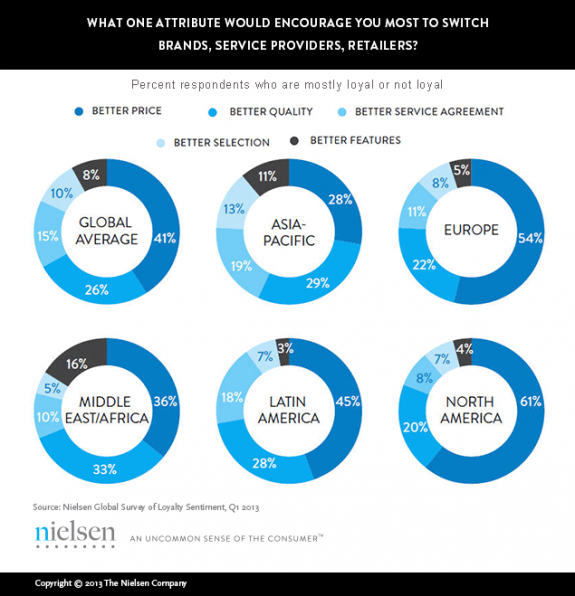
Loyalty programs can improve profits
UNO applied the disciplines of building a loyalty program around quality and service for Vivien's Jewellers. We replaced monthly cardboard in-window price promotions with quality themed creative store merchandising. We introduced a VIP loyalty program that emphasised exclusive product offers. Sales, discounting and price promotions were no longer frequent, being replaced with special occassion sales through invitation-only Wednesday night store openings. While Angus & Coote and Michael Hill were seen to be always on sale, we built a reputation for accessable aspiration.
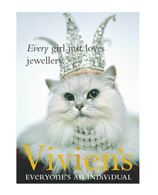
Over 5 years we transformed Vivien's sales base from only 25% repeat sales to 75%. This also helped Vivien's double the number of profitable stores and ultimately sell the business at a category premium.
I continue to encourage our challenger brand clients to compete with the global competition by developing marketing strategies focused on what customers really value. The big guys often lack the ability to get close to the customer, let alone respond. You may have noticed over the last year a number of visiting global FMCG heads lamenting how hard it is for them to make money in the Australian market. Coles and Woolies forcing them to cut margins isn't helping.
Do you cut for share or innovate to grow?
Increasingly businesses nimble enough to canibalise their existing sales by trialing new products or services will gain market share in the long term. And because they aren’t discounting, those sales can be more profitable.
Spend your time looking at ways to make your customers feel understood and then invest in a creative communucation of your differentiated proposition. Let the global brands discount their way to local irrelevance.
Read MoreFrom the people who gave us wooden pillows – brand differentiation

Do you think it’s hard to differentiate in your category?
 A trip to Japan gave me a fresh perspective on how to make any brand stand apart from the competition.
A trip to Japan gave me a fresh perspective on how to make any brand stand apart from the competition.
Last month I bought a new mattress from David Jones Sydney city store. Each brand had the same proposition: sleep soundly and wake refreshed. Choose between hard or soft, affordable or expensive.
Talk about a lack of fresh ideas, the promise of a good nights sleep hasn’t changed since I worked on the Simons mattress account 30 years ago, or the idea of looking after your back when I marketed Sealy “Posturepedic” 20 years ago.
The Japanese have a strange way of looking at brand propositions
At least on first view this first world nation has some peculiar ideas about brand messaging. The English language isn’t used by 999 out of 1,000. And Japan has a proud history of maintaining thousand year old traditions. So this different background means common products are often promoted in totally different ways to our western approach.
A couple of weeks ago I checked out the merchandising of mattresses in a central Tokyo department store. Here are some pictures I took when the salesman wasn’t looking – mattresses marketed the way Nike sells shoes.
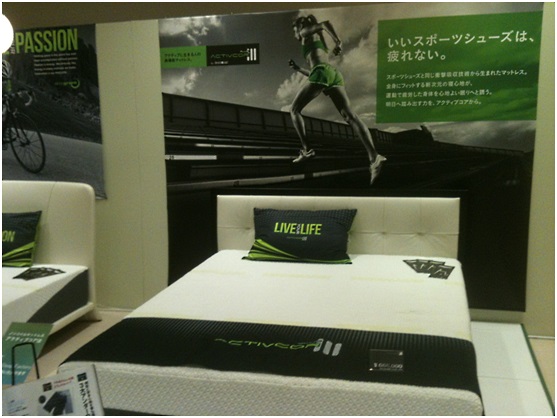

Nothing soft and fluffy about this positioning – “Activor, the next generation in sleep technology.” Hi-tech performance for the modern Japanese consumer.
Feeling inspired? Whatever your category, you can find inspiration from taking a completely different perspective.
P.S. Aussie mattress brand repositions for export market
Local mattress maker A H Beard has just launched in China. Unencumbered by any legacy in this new market, how are they differentiating? Their first mattress for Chinese consumers retails for over $20,000. That should set them apart.
Read MoreVale Scott Kennedy – one of NZ's finest artists
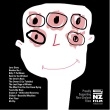
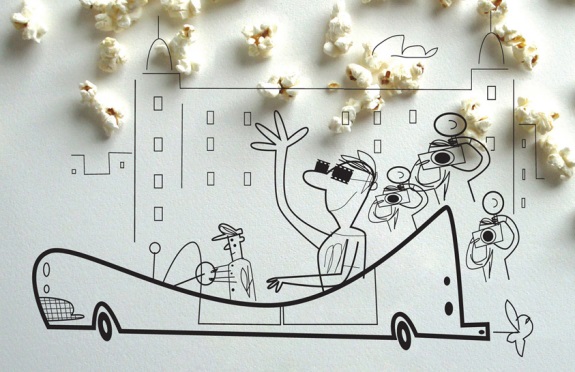
Our professional careers are sometimes touched by the most inspiring personal relationships. I was blessed with the early entry into my life as an Art Director by an artistic genius from across the ditch, Scott Kennedy. It was the early 80s and any Kiwi artist of promise had washed up in Sydney seeking a broader canvas.
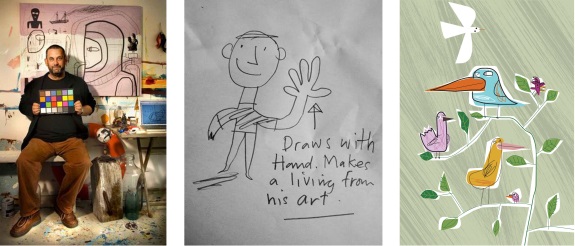
Scott bid us goodbye last week after a painful but defiantly good-humoured fight with cancer. At the end his hands wouldn’t work, but Scott’s creativity was always alive in his one of a kind headspace.

As you can see Scott’s view of life was re-expressed through the lens of 60s cartoon characters and tin toy robots and Dr Strangelove. His ex-US Army dad had relocated the entire family from California to New Zealand in the belief it was the safest place to be when they dropped The Bomb.
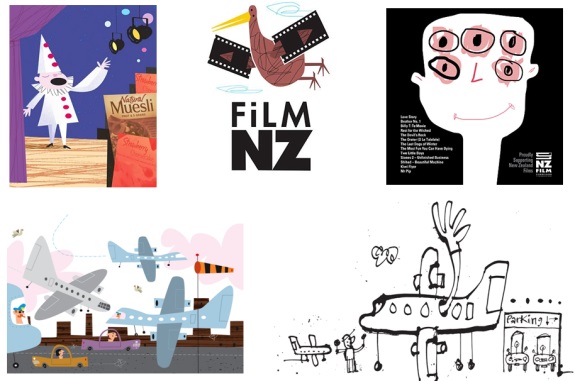
I loved Scott for his quirky humour, big heartedness and child like enthusiasm for new creative possibilities. Have a Captain Cook at Scott’s book covers for the popular How to… series, no surprises which is my favourite.
I write this while wearing Scott's "Joy kills sorrow" T-shirt, which is a fitting memorial to his precious time with us.
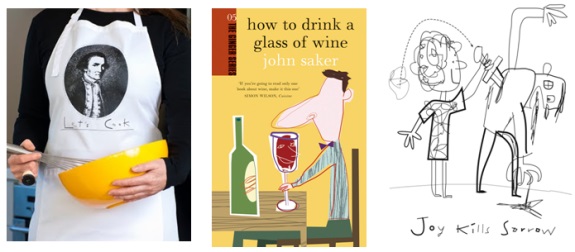
What CEOs want from an agency


The top 3 things CEOs and CMOs want from their agency according to a survey by the Communications Council are:
1. Innovation and creativity
2. Leadership
3. Integrity
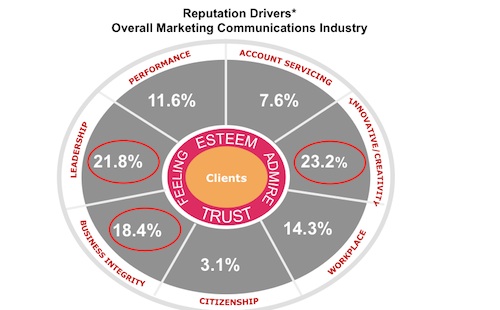
Funnily enough, the leaders of agencies put Leadership last.
Which could explain why three quarters of CEOs don't value marketers at the board level.
I wonder if this is a reflection of the transaction based relationships most agencies seem to be stuck in today. Whatever happened to “fearless advice”. It's what most left brain business managers want from right brain agency creative thinkers. Creative thought leadership is where agencies add value, not servile account management.
Perhaps it’s a consequence of a co-dependent relationship between ignorant brand managers and subservient suppliers. Meanwhile the smart business leaders appreciate the real value to be added is at the board level, with lateral and entrepreneurial advisors from outside their organisation helping them challenge traditional business models.
Read MoreTen biggest threats to business
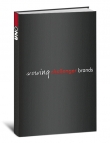
A global survey has given us a picture of what exactly the biggest challenges are for business managers today. Across categories and regions the message is the same – there are half a dozen particular issues companies are feeling pressured by, but don’t know how to deal with.
Those clever marketers at Ernst & Young have come up with a catchy way of showing what we’re all facing – they call it the Risk Heat Map.

Businesses of every size are facing the same big problems. Fortunately current research shows how your business can turn this time of rapid change to your advantage.
The real insight for business owners in this picture is that while managers recognise these risks, as we look across the Y axis we realise most don’t know how to deal with them. These challenges are the consequence of a new paradigm. There’s an elephant in the boardroom – it’s right there in the middle, emerging technologies. Yes, it’s the Internet.
Drivers of business change
The Internet has changed everything. For the first time in the history of commerce, we now have true globalisation thanks to the transparency the Internet gives customers. People can now find the truth about any product or service in just a few clicks, in the privacy of their home or using a smart phone on the shop floor.
In the recent past there was still an advantage in being big – a manufacturer could configure a product and control its availability by region, a retailer could price a product depending on the suburb. Today with instant transparency, a customer can pick and choose from what’s on offer anywhere in the world.
Brands can no longer rely on any competitive advantage from tradition, size or resources. Rather, as Boston Consulting says – “in a world of change, the spoils go to the nimble”. The key to success is not just recognising the drivers of change, it’s ACTING on them.
The biggest risk to any business today is inaction. UNO has a proven formula for growing challenger brands. We can help you start today, risk free.
Email gm@unomarcomms.com for an outline of our process.
Read MoreWhat is beauty in commercial art?

“We have a duty to keep ads beautiful” said Craig Davis, co-chairman and chief creative officer with Publicis Mojo Australia and New Zealand in Campaign Asia, yesterday.
I respect Craig, we pitched against each other for The Rocks account decades ago when we were young and radical and creative directors of competing boutique Sydney agencies. I won. The next year I pitched against him again, for Sydney Water. He won.
Personally I don’t think advertising is art. It’s Commercial art, capital C. The latest CEO survey published in the same magazine reports 80% of the region’s CEOs think marketing people “are in La-La Land”.
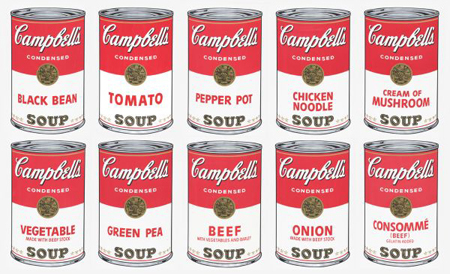
Craig’s musings on beauty in advertising aren’t going to change those perceptions. He is concerned “talent, craft and significance of ideas are being pushed aside by the desire to save time and money.” Craig makes a point worth taking the time to consider – we have all seen examples of the office junior being asked to whip up an ad because they know how to use clip art and can have it done in no time. Or the manager’s nephew is good with computers so he can build the corporate website for less.
All of this is being driven by the changes enabled by the Internet, “the flip side of the new digital meritocracy is that there’s an inordinate amount of noise generated” observes Craig.
He reminds admen “clients pay us to deliver results.” Hear, hear I say.
Then he returns to his point that “at its best, advertising is beautiful, but in the absence of creativity, it is just pollution. In the words of John Keats: Beauty is truth, truth beauty—that is all ye know on earth, and all ye need to know.”
Advertising that works is advertising that delivers a ROI
Business owners are more inclined to see beauty in numbers, like low cost per lead, and high rates of conversion. The fine balance of marketing communications is understanding how to use creativity to commercial advantage.
There is undeniable beauty in identifying a genuine human truth and expressing it to an audience in a way they find appealing. But let’s not talk about beauty for its own sake, lets talk about craft. Both in the craft of storytelling and execution, for business sake.
A century ago Dadaists like Marcel Duchamp challenged the protectors of traditional painting with the question “What is art?”
Before you invest in advertising, social media marketing or any program to grow your business, ask yourself, is this commercial art for the 21st Century? Is the execution well enough crafted to connect with your audience and leave the desired impression? Most importantly, will it give you the best return on investment?
It’s a commercial decision after all, not a beauty contest, don’t you think?
Why CEOs like Facebook yet fear it

The 2012 IBM global CEO study is just out. It once again confirms management is often aware of what needs to change, yet fear acting on their knowledge.
"CEOs need social media, but many fear it" – IBM
The world’s CEOs believe that in the next five years social media will push past websites, call centres and channel partners to become the No. 2 way to engage customers (after face-to-face communications).
However fear of change is preventing most from actually actioning a Facebook strategy. Many will miss capitalising on this inevitable trend to more agile competitors. Some fears are justified, there is no doubt there is risk involved with social media. Risk isn’t just bad ideas like CommBank’s terrorist Olympics viral video.
Advertisers are now liable for users' Facebook comments

Australia's digital industry is up in arms about a ruling from the ad watchdog, which determined a brand's Facebook page is an ad platform with all its material - including user-generated content - liable under the AANA code.
A recent ruling from the Advertising Standards Bureau (ASB) in a complaint against Diageo said it considered Facebook to be a marketing communication tool. The decision changes the landscape of social media advertising with brands liable for content generated by consumers.
In its ruling, the ASB wrote: “The Board considered that the Facebook site of an advertiser is a marketing communication tool over which the advertiser has a reasonable degree of control and could be considered to draw the attention of a segment of the public to a product in a manner calculated to promote or oppose directly or indirectly that product."
Social media advertising regulations and marketing your business
“The Code applies to the content generated by the advertisers as well as material or comments posted by users or friends.”
This is yet another example of how our regulatory frameworks are anachronistic in the era of the Internet. This new world of social media is merely a decade old, yet regulators like ASB are employing codes written in the steam age when ads were only mass distributed by printing press. Publishers had control of what letters to the editor were published with an eye on libel. But the pace of public postings on Facebook makes such a process for an editor of a business Facebook page less that of a publisher, more one of the town crier who invites people to the town square but can’t predict what the crowd will yell about loudest.
Right now the judiciary has similarly lacked an ability to adapt as the public circumvents contempt of court rules and out accused on Facebook, passing collective judgement before a trial. No blurred pictures of the accused’s face like in the press or on TV. Think the Kings Cross king hitter, perhaps fuelled by Diageo products. Lets see a post on a liquor brand’s Facebook about the next alcohol induced murder and ponder the consequences. It's going to happen, irrespective of what the ASB stipulates.
So if CEOs are going to increasingly use Facebook for a dialogue with prospects, we will need to be extremely diligent to keep on the right side of the law, irrespective of how sensible we think regulations are today.
Learn from Darrell Lea's Rocky Road

Darrell Lea's new Perth concept store opened in March. Too late to keep the administrators from the door?
Most business leaders know the 4 Ps from marketing 101. As Darrell Lea’s predicament shows, in today’s marketplace where change is underway at an increasingly blistering pace, keeping those easily understood basics working in your favour is becoming increasingly difficult. Here they are one by one:
Product
Mega trends like multiculturalism, gourmetisation of food products, better for you choices, and social issues like fair trade today shape what we choose to eat.
In the past it was enough to make minor adjustments to products and expect a sales lift simply by placing a NEW IMPROVED flash on the wrapping. For the last couple of decades there’s been little in the way of product innovation at Darrel Lea. As well intentioned as they may have been, small line extensions like fruit flavoured liquorice haven’t been enough to stop the sales decline.
Businesses have to be wary of who they entrust to give them independent counsel. Darrell Lea invested in research that resulted in a new tag line, “85 years of creating sweet magic”. One can argue this simply reinforced a backward looking management mindset.
Today customers are rewarding brave leaps forward in categories. As Max Brenner’s website proclaims, “Chocolate is not just about taste” it’s also about fashion. From Mexican spicy chocolate and hot chocolate shots to chocolate soufflés and Tiramisu, Australians are spending more money on chocolate than ever before as brands can come up with new adventurous ways to tempt them.

Challenger brands aren’t just new companies doing new things, old companies doing things differently are also being rewarded. Australia’s oldest chocolate maker/retailer, 97 year old family business Haigh’s has kept customers coming back and continues to entice new ones with adventurous new takes on chocolates.
Promotion
Cutting back on advertising for a short term cost saving is proven to come at a long term significant loss. Once a significant investor in advertising, Darrell Lea has been absent from mass media marketing for several years. It takes many years to build a brand and nanoseconds to damage one in social media. It pays to treat advertising as a compounding investment that pays an annuity in return.
Price
Too often price is only mentioned in the same sentence as promotion. It is in fact a two way lever. A 4 for $15 offer on Rocklea Road isn’t going to entice a new customer, it simply reduces the margin on a sale to an existing one.

Whereas Lindt, once considered a niche special occasion brand, has grown by offering a variety of chocolate balls across a range of pricepoints and product sizes that still maintain a premium.
Place
The Internet is making everyone reconsider where is the best place to make a sale? Ecommerce may not be right for a product that will melt in the mail, but is owning a shop the best alternative? Why own 63 shops when most chocolate sales are through Coles and Woolworths and convenience stores?
If you are going to have a retail outlet, it needs to have a good reason to justify the high overheads. Darrell Lea’s average over the counter sale is around $11 per customer. You’d need a lot of footfall to justify the rental on the King and George Street Sydney store. On the opposite corners are the eye candy Apple store and Louis Vuitton, where the products cost thousands (and are never discounted).
Challenger brands understand stores are the new 3D interactive ad medium. They are all about theatre and entertainment. Max Brenner has the theatre of their liquid chocolate Willy Wonka-esque stores.
Other retailers realise the store is simply the best way to gather new customers details for database driven online sales. The objective of the shop front is to entice prospects in and the brief to staff is to start a long-term relationship. For instance, banks lose money on physical branches, but haven’t found a better way to gain new customers. Citibank’s new branches in Hong Kong have been designed by the same architects as the Apple Stores. You can’t make a deposit at one of these new gleaming white banks with couches and interactive screens, you can have an espresso made by a barrista who is briefed to cross sell financial products to you.
How to stay competitive
Many market leaders are vulnerable to the threat that comes from failing to re-look at their entire business models. Simply reviewing the 4 Ps from the perspective of traditional wisdom will no longer ensure a business stays competitive. Market leaders that fail to embrace change, not just across product and service but entire systems and relationships, are increasingly less profitable than smaller challenger brands. There are a number of proven tools and techniques to help businesses rapidly adapt and trial new ways, feel free to ask us about some of them.
Boston Consulting has formally identified what savvy marketers know is the driver of business growth today:
In a world of change, the spoils go to the nimble*
*Martin Reeves and Mike Deimler, Boston Consulting Group,
Harvard Business Review July-August 2011

Founded in Adelaide by Alfred E Haigh in 1915, Australia’s oldest family-owned chocolate maker/retailer has a history of embracing change.
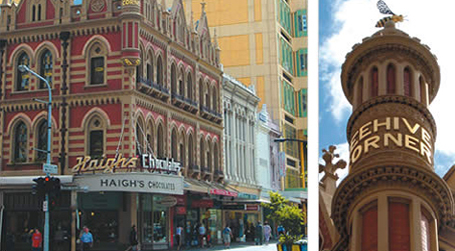
In the 1950s grandson John learned from Swiss masters Lindt and Sprungli and introduced European fine chocolate making to Australians. The current fourth generation Haigh family management preside over a business that represents barely 1% of Australia’s chocolate sales. Yet I would venture to say they are very profitable.
By continuing to innovate Haigh's continues to prosper as a challenger brand
Their award-winning Australian Collection was launched in 2003, with six native food centres including quandong, macadamia nut and honey, lemon myrtle and wattle seed. And as Australian’s have become more sophisticated in food tastes, Haigh’s have kept up with such adventurous chocolates as a South Australian truffle duet made with premium wines from the State’s wine regions.
Haigh’s environmental policies and sponsorships are just one indicator of how in touch this old business is with today’s consumer.
Last August at the Family Business Australia Conference, Joint Managing Director Alister Haigh told me they were ready for the next big change - online sales. The only sticking point is developing a delivery method that can guarantee the integrity of their heat sensitive product.
Following the biggest fine in UK finance history, it’s timely to look again at Barclays’ Big Ad

Barclays agreed to pay a record $442 million fine for rigging the London interbank offered rate last month. The scandal has cost the jobs of Barclays CEO Robert Diamond (below), Chairman Marcus Agius, and Chief Operating Officer Jerry Del Missier.
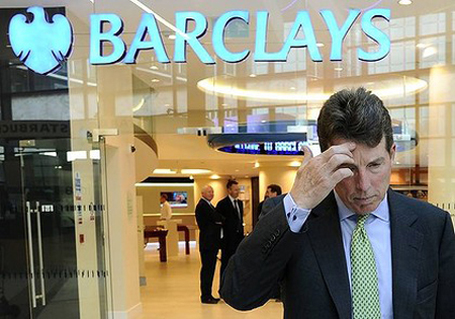
It pays to consider the future consequences of a single-minded marketing tagline. For Barclays, “We’re Big” just doesn’t cut it anymore.
If you're a marketer, Read This Or Die...

A friend sent me a YouTube link via Facebook – a comedy sketch by Bill Hicks, where the comedian asks anyone in the audience that’s in advertising or marketing to “kill yourself".
I was reminded of my profession’s tenuous grip on social acceptance when this week leading researchers Roy Morgan released their latest annual survey of how Australians rate the professions: ad people are still near the bottom, just above car salesman.
There is still hope for Admen and marketers – it’s about having conversations at the board level that explain in understandable terms how we can add value. This week McKinsey Quarterly published a checklist of 5 things that will help business managers get the best ROI from their marketing.
So for those who rate the wisdom of McKinsey's consultants, here in my words are the 5 tips that will make any CEO take you seriously.
1. What exactly influences our consumers today?
Mass media marketing to the masses is oh so yesterday. Thanks to the Internet, shoppers now consider options at more times in more ways, from reading online reviews to comparing prices when in-store using their mobiles. Once someone has bought something, they potentially become a reviewer themselves.
So how do you get into the new consumer's head? You can use anything from traditional research to online polls or social media tracking to get a better understanding of what consumers are now thinking about a category. The key is to be open minded about what you learn and have a management team willing to let go of accepted wisdoms.
2. How well informed (really) is our marketing judgment?
It was only a decade ago when traditional advertising was all that mattered. Marketers who new their stuff could make decisions safe in the knowledge what always worked in the past probably would tomorrow. And planned accordingly. Today you have to be able to recognise signals of change, and act on them. This means managers have to move out of their comfort zones and hypothesise, test new ways, then measure, analyse and adapt. Again and again. In McKinsey’s words there has always been a a need to define a “clear relationship between marketing spending and business results”. Today it has shifted from “should we be spending on marketing at all?” to “what’s the optimum marketing spending needed to hit our targets?”
3. How are we managing financial risk in our marketing plans?
Successful marketing communication takes hitting the right audience with the right message at the right time. The difference today is the targets are increasingly individuals and they are moving faster than ever. Traditional mass media allows advertisers to minimise risk by using metrics based on years of surveys that measure frequency and impact of a particular medium. Not so now. With today’s new media “influence can shift rapidly, and there is little accumulated experience about which messages work, when marketers should apply them, how they can be scaled, or even whom they influence”.
Measurement and risk reduction today comes from a closer relationship between sales and marketing and the channel. One of our clients has found scan data has new meaning now it can be overlaid with pre and post campaign brand tracking and the incredible analytics available using Shopperpedia.
4. How are we coping with added complexity in the marketing
organisation?
If you think it’s hard to keep up now, it’s only going to get harder faster. McKinsey's unsurprisingly suggest “you’ll require a number of specialists. You can’t get the skills and knowledge you need in just one person, and you’re not likely to get everything you need internally”.
5. What metrics should we track given our (imperfect) options?
At this point McKinsey goes into a whole grab bag of consultant speak. At UNO we think it best to get back to business basics – success should be measured by profit, not volume of sales or market rank. A business is successful when it can compete on more things than just price. And it knows it’s a real challenger brand when staff and partners are aligned and customers are referrers.
Now if you’re in advertising or marketing and you can’t get your head around the idea you have to change to survive, take a couple of minutes to laugh out loud as Bill Hicks encourages you to kill yourself
Where the smart budgets are being spent...Social Media
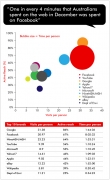
Have you noticed over the last decade that just about anything that isn’t nailed down has been digitised. Today we can access nearly everything from anywhere on anything – from getting the news on a tablet, trading shares on a mobile or accessing software services from the cloud. Plumbers are relatively safe, but most other businesses have to change.
The difficulty for business managers though is not just deciding how to make the change to digital, but how to make money out of it...
Pew Research Centre in the United States found that digitisation is burning money
Newspapers lost $10 in print ad revenue last year for every $1 they gained online. Just five companies, none of which existed a couple of decades ago are now taking 68% of online ad revenue: Google, Microsoft, Yahoo, AOL and Facebook.
Marketers know that they need to integrate traditional mediums with digital. Few businesses actually do – and some still think online is primarily for brands with young customers.
Businesses may be surprised to discover that the place where Australians spend the most time online, is also the most popular with women 25-45 years old.

The papers continue to spend money on journalists and creating the content, while these new companies continue to grow their revenue off the papers’ labours. Now because of their growing databases, fuelled by an understanding of people’s behaviour and preferences gathered from social media use, the digital intermediaries can now target ads more precisely than the old publishers.
The things we can now do on Facebook are incredible. In the past only advertisers who could afford to buy expensive data and research could precisely target their consumers. Now any advertiser can pretty well plan as effectively as the global giants by tapping into the growing wealth of intelligence of the social media technologists.
The Pew report says: “Two trends in the last year overlap and reinforce the sense that the gap between the news and technology industries is widening. First, the explosion of new mobile platforms and social media channels represents another layer of technology with which news organisations must keep pace. Second, in the last year a small number of technology giants began rapidly moving to consolidate their power by becoming makers of 'everything' in our digital lives. Google, Amazon, Facebook, Apple and a few others are manoeuvring to make the hardware people use, the operating systems that run those devices, the browsers on which people navigate, the e-mail services on which they communicate, the social networks on which they share and the web platforms on which they shop and play. And all of this will provide these companies with detailed personal data about each consumer.”
Business journalist Leon Gettler points out “Newspaper groups like Fairfax are the canaries in the coal mine for other industries facing similar challenges, from book shops and publishing to health care, industries where barriers to entry are low and where information is the main product. The trend to digitisation will accelerate with 'Generation C', people born from 1990 on who expect to be constantly connected through every possible device now entering the workforce, and with costs of computing and technology equipment dropping.”
“In every organisation, from media to retailers like David Jones, Myer and Harvey Norman, the biggest challenge always comes down to the tension between those who advocate a more aggressive approach and those aligned with legacy traditions, those who want to go fast and those who want to slow down.”
Adaptability: the new competitive advantage
As the pace of change accelerates, adaptability becomes the new competitive advantage. Long established leaders like Kodak, Borders and Fletcher Jones are a lesson in what management can expect if they don’t change their business model to integrate digitised marketing with their traditional methods.
Sources: Leon Gettler, Business Spectator, 28/3/12
Pew Research Centre, How Newspapers Are Faring Trying to Build Digital Revenue, 5/3/12
Why are marketers using Smartphones today?

The answer is in the numbers, and is a pointer to the next big thing.
Google researched 300,000 people around the world to find out their Smartphone use. Now as Australian marketers we can compare and contrast markets.
Number 2 for Smartphones in the world
Australia is now ahead of the US, UK, and Japan.
Average Smartphone under 12 months
Most of Australia’s Smartphones were purchased in the last 12months. We’ve gone from the back of the pack to the second highest penetration of this technology in the last year. Every month 1-2% of the entire population of Australia buys a Smartphone.
81% do it at home
More Australians used their Smartphones at home during the past 7 days than out – just 66% use them on the go.
50% like to watch
Almost 1 in 2 use their Smartphone while watching TV, while 1 in 3 use Smartphones and another Internet-enabled device at the same time. Talk about adult ADHD media consumption.
Smartphones are good for business
49% use their Smartphone to research and then call businesses – and 45% visit a business they’ve found using their Smartphone.
Aussies are obsessed with real estate
The stats confirm what we’ve all known from dinner party conversations – 1 in 5 Australians surveyed had looked for an apartment or house with their Smartphone – that’s 33% higher than the US or UK.
40% search daily
2 in 5 of Australian Smartphone owners use mobile search daily, that’s more than the UK or Germany and almost as high as the number who use desktop search daily.
The number of queries about retailers made via mobile devices has jumped 220 per cent year on year, and is now about 25 per cent of all queries.*
App, app and away
Australian survey respondents had 25 apps on average per Smartphone, Vs 23 in the US & UK. We’re not just talking free apps; Australians averaged 8 paid apps per phone.
TV or not TV?…
1 in 5 Aussie Smartphone owners would rather give up their TV than their Smartphone.
Better than sex?
1 in 3 say so according to a Telenav survey, that’s how many would choose their Smartphone rather than sex.

Now you’re up to speed with the omnipresence of mobile you’ll need to start thinking about how you can extend your online activity beyond a website that is viewed on a PC.
But wait, there’s more. Nothing stands still nowadays; to keep up you also need to be thinking of how to stay ahead of the competition.
So what’s next?
In just a year Australians have learnt to surf the web, send emails and watch movies on a Smartphone. Now consumers are moving to tablets because they are more convenient than laptops and obviously have a bigger screen than Smartphones.
1.2 million this year
In 2011 tablets will outsell Smartphones in Australia. 64 million tablets will be sold worldwide by the end of this year. #
73% of them will be iPads
Apple will sell 47 million iPads this year.#
We believe video to mobile devices is a game changing opportunity for challenger brands. Until now many marketers have been held back by the high cost of entry of mass media advertising. The amount of media consumption online has risen from 25 per cent in 2007 to about 42 per cent now. A new buzzword for marketers in the US is ''SoLoMo'' – as in social media, local networks and mobile. Savvy marketers are recognising the need to develop strategies that make the most of these new, powerful mediums. *
We believe you can now punch above your weight more effectively than ever by integrating video and content to create a genuine one-to-one dialogue on customers’ mobile devices. You’ll be surprised what is now possible…
50% conversion rate
50 per cent of people who inquired about a hotel via a mobile device went on to make a booking within a couple of days, compared with 20 per cent for those online via a computer. *
Give me a call on my Smartphone, 0412 982 538, if you’d like to know more.
*Ross McDonald, Google, 9/12/11
#Gartner, 8/12/11
"Greenwashing" Why a great idea that isn't true is a bad idea
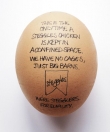

What a shame this great ad for Steggles wasn’t for a producer of real free-range eggs. It was pulled because it’s a lie, even though beautifully told. Every person in every agency should be stegglers for detail.
The public deserves better than marketers passing off intensively “farmed” produce as free range when there isn’t room for the animal to scratch itself. “Greenwashing” takes many forms, like adding the claim Hormone Free to chicken packs when it’s been illegal to add hormones to any farmed chicken in this country since 1968.
At the moment here at UNO we are working on a campaign for an Australian innovation, the first plastic to biodegrade in modern landfill, which is where a billion disposable coffee cups end up each year across our country. We have told our client he can succeed as a challenger brand by telling the truth. There will be no green washing, just the facts about what this product can and can’t do. And we’ll do that the way all ad people should, with creative wit and human insight.
J Walter Thompson’s words of over 100 years ago are as right today as ever – “The truth, well told” is why we get up in the morning.
See the vodcast about what makes biorene biodegradable – the Earth eats it up!

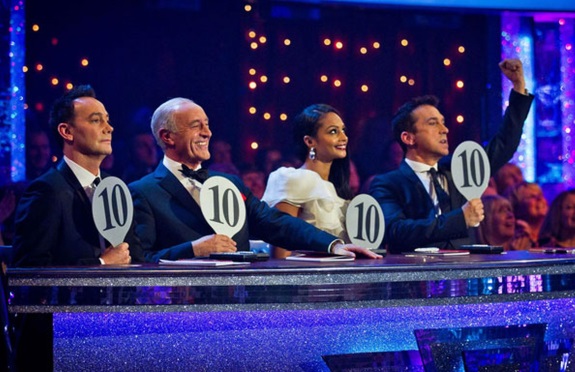




Scan the QR code for our contact details.
Download the Neoreader app.
© COPYRIGHT 2013 UNO marcomms Privacy